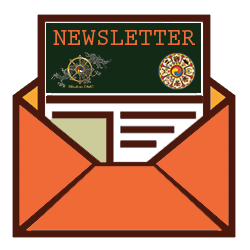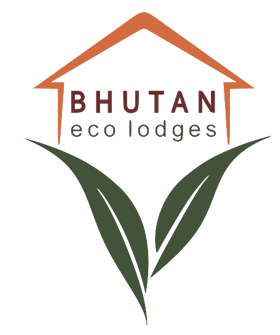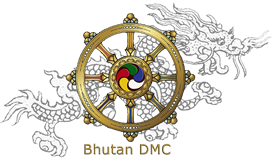Trongsa (altitude 2,300m)- A town steeped deep in history and legend from where unification of Bhutan was attempt
Trongsa forms the central hub of the nation and is historically the place from where attempts at unifying the country were launched. Both His Majesty King Ugyen Wangchuck, the Penlop of Trongsa, who was elected the country’s first hereditary monarch and his successor, King Jigme Wangchuck, ruled the country from Trongsa ancient seat. The Crown Prince of Bhutan normally holds the position of the Trongsa Penlop prior to ascending the throne including the present King who was appointed Penlop in 1972, shortly before his succession to the throne. The entire landscape around Trongsa is spectacular.
Places of Interest in Trongsa
Chendbji Chorten
Approximate four hours drive from Wangduephodrang is Chendbji Chorten, patterned on Swayambhunath temple in Kathmandu. It was built in 18th century by Lama Shida, from Tibet, to cover the remains of an evil spirit that was subdued at this spot.
Trongsa Dzong
Like almost all towns in the Kingdom, this Dzong architecture dominates the entire Trongsa horizon dwarfing the surrounding buildings. Built in 1648, it was the seat of power over central and eastern Bhutan. Both the first and second King ruled the country from this ancient seat. Protected from invaders by an impenetrable valley, Trongsa Dzong is an impregnable fortress. The Dzong itself is a labyrinth of temples, corridors and offices holding court over the local community. It is built on many levels into the side of the hill and can be seen from every approach to Trongsa heralding its strength as a defensive stronghold.
Ta Dzong
The Ta Dzong, a cylindrical stone structure rising five storeys, was built in 1652 by Chogyal Minjur Tempa, a task entrusted to him by Zhabdrung Ngawang Namgyal. After more than 350 years, it has been resurrected into a classy museum, that represents a tasteful blend of tradition and modernity.
The museum’s first gallery on the ground floor showcases the guardians of the four directions that protects the entrances to monasteries and temples and ward off evil influences from all directors. The second gallery describes the foundation of Trongsa Dzong, its deities and holy men. A special feature of the third gallery is the Raven Crown, worn by first King Gongsar Ugyen Wangchuck. The fourth gallery has a silk kira and tego of the first Queen Ashi Choden, the oath of allegiance that was signed on 3.5 metre scroll by the representatives of clergy during the coronation of second king in 1926, his prayer book and silver box, the third King Jigme Dorji Wangchuk’s amulet, ivory flask, container for betal, areka, line and a zenith radio. The fifth gallery showcases the message of the sacred dances including the wheel of life, masks and costumes while the six gallery is about Buddhism and rituals. On the seventh gallery are a Khesar Ling Lhakhang and the statues of Guru Rinpoche. The ninth gallery houses Guru Rinpoche’s eight manifestations and Maitreya Buddha Lhakhang. The top gallery showcases the body, the speech and the mind of Adibuddha.
Excursions around Trongsa
Kuenga Rabten
It is about 23 km, one hour interesting drive from Trongsa. Kuenga Rabten was the winter palace of the second King and now looked after by National Commission for Cultural Affairs. It is pleasant afternoon trip from Trongsa and offers good insight into the early days of Bhutan monarchy.
HOTELS IN THIMPHU
HOTELS IN PUNAKHA & WANGDUE
HOTELS IN GANGTEY
HOTELS IN TRONGSA
HOTELS IN BUMTHANG
HOTELS IN MONGAR
HOTELS IN TRASHIGANG
HOTELS IN SAMDRUP JONGKHAR
HOTELS IN PHUENTSHOLING
HOTELS IN HAA
HOTELS IN GELEPHU
HOTELS IN ZHEMGANG
RESTAURANTS IN PARO
RESTAURANTS IN THIMPHU
RESTAURANTS IN PUNAKHA
TOUR ITINERARIES
TREKKING ITINERARIES
SPECIAL INTERESTS TOURS
UNIQUE FESTIVALS & FAIRS
BLOG


